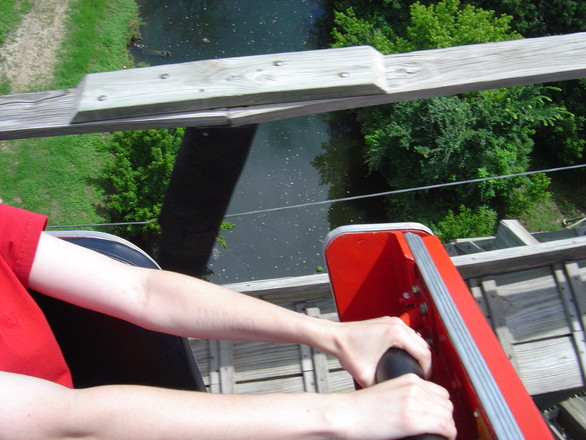Heart pounding. Light headed. Lungs starving for air. Shaking. Sweating. About to throw up. On the verge of passing out. Chest pains. Hands are tingling. Feet are numb. Sure you’re about to drop dead at any moment, yet unsure if what is happening is even real…
Panic attacks. Perhaps the closest one can come to death without actually dying. At least, that’s how it feels in the moment. These intense experiences of anxiety are ruthless, typically peaking around 10 minutes and then slowly dissipating. They can’t kill you; they just feel like they can. However, no matter how many times you’ve experienced a panic attack, there tends to be a little voice in your head convincing you that this time is different. This time is the real deal. This time I’m actually going to die.
The natural response to a panic attack is both mental and physical discomfort. The physical bodily sensations aren’t pleasant and neither are the racing thoughts that accompany them. Intuitively, we seek to stop this discomfort. Even more ideal for us would be to avoid the experience all together. It is in this avoidance that panic attacks become powerful. They gain control over us by being something we hate and something we fear. Slowly, we begin to forfeit our lives to panic. Maybe we no longer engage in our favorite hobbies because we once had a panic attack in that situation. Or, we might become isolated because we once felt embarrassed or judged in front of friends. Either way, we give the control over to our panic attacks and create a vicious cycle of avoidance and reinforcement. By avoiding the people or situations that trigger panic attacks, we reinforce that panic attacks are something to fear and something to avoid. Subsequently, any experience of a panic attack becomes increasingly uncomfortable and distressing. It becomes harder and harder to engage in life and it can begin to feel like we have no power to choose our path.
Interoceptive therapy challenges our natural response to panic attacks and forces us to willingly step into anxiety. In involves purposely inducing the physiological sensations associated with panic attacks and allowing yourself to authentically experience them. For example, you might run up and down the stairs until your heart starts racing and you can’t catch your breath… or you might spin around in a circle until you’re dizzy and lightheaded. Once you’ve induced these physical feelings, choose to stay in them and give them your full attention. Notice what it’s like to hear your heartbeat in your ears or to feel your lungs expand with every gasp for air. While it may seem silly, what you’re really doing is giving yourself permission to feel the sensations that you have learned to fear. By sitting in the discomfort of our physical sensations we begin to recognize that they don’t have to have authority over us. They don’t have to be scary. They don’t have to mean our world stops. We can experience a racing heart or feel as though we may pass out and do the things we love at the same time. They no longer have to be mutually exclusive. Moreover, a racing heart no longer needs to mean panic attack or doom. It can mean vitality, excitement, action, or whatever label we choose to attach to it.
The key is to notice the bodily sensations for what they are and to be mindfully engaged with them. Accept what is going on for you at the peak of your panic. Allow your hands to sweat and your legs to go numb. Willingly embrace a skipping heartbeat and a wave of nausea. By doing so, you accept that which is out of your control and gain the ultimate form of power. Power to choose how you want to live and what you want to do – even if it means having a panic attack (or several) along the way.


